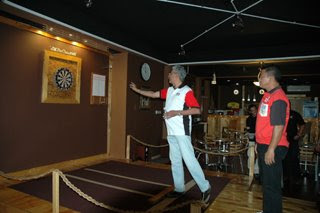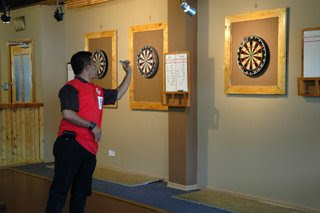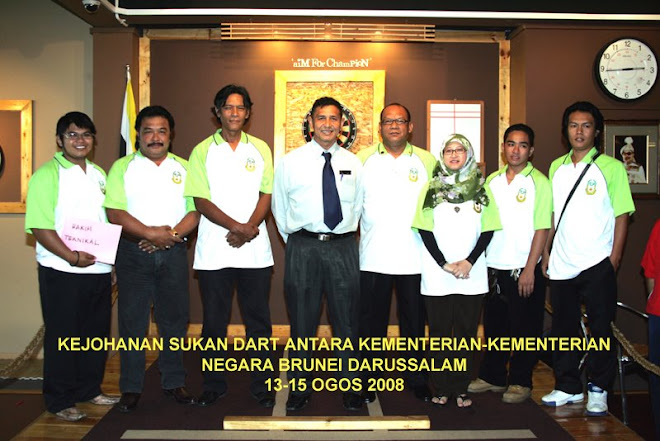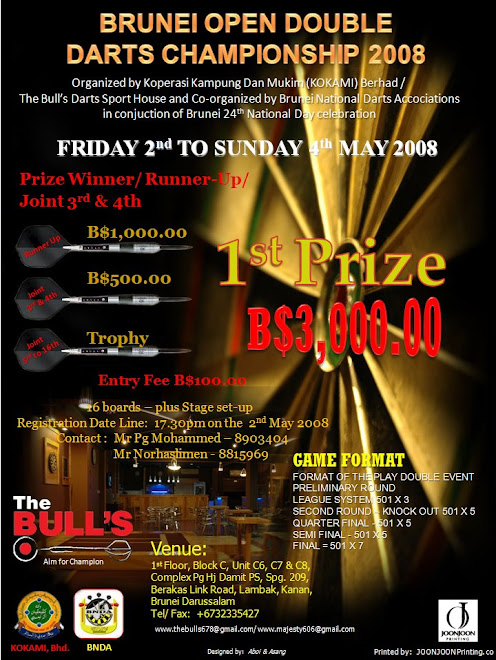Although it may seem like a game in your local pub is an ideal way of getting in some practice, most darts players will tell you that the only way to improve your game and technique is to practice by yourself. Competitive games in the pub are actually where you put this practice to use.
However, to complicate matters further, many professional darts players will advise not to practice 301, 501 or cricket by yourself, as you might become bored and frustrated with the game as you play. Instead, you should aim to hit particular scores (e.g. bullseyes, doubles, singles and triples) a certain amount of times each, so that you become experienced at hitting your required shot every time you throw the dart.
A great deal of mental ability goes into playing darts, and therefore you need to be able to develop this mental concentration. One of the main qualities that should be cultivated is confidence. If you think that you can do it, there is a much greater likelihood that you will be able to pull off your shot.
Developing your own technique, grip and stance is vital for your performance. Take time to see which one suits you best and provides you with the best throw, as well as observing other skilled darts players. Focus on how they throw with ease and try and recreate this with your own style, but try not to solely imitate them. Instead, try and develop what is best for you.
Technique
Make sure that you develop and maintain a correct stance. One of the key ways to be able to throw consistently good darts is by having a steady arm. Try and keep your upper and lower body fixed in place, and do not allow a swing when you throw the dart. Darts need minimal strength to reach the board and all the power used to throw the dart should come from your fingers, wrist and arm, not from the rest of your body. Many players think that if the dart misses the board or hits lower than aimed for it is due to lack of power. However, this is more to do with the accuracy of the aim and the follow-through.
Some beginners develop a little hop or push when they start to throw darts, and it is essential that this habit is broken straight away as it will be much harder to break later in your darts playing career. Others will try and lean over the line. Gaining these few inches is not worth it in terms of losing your balance and stability, and it will also be more physically demanding for your body. Again, this habit should be broken as soon as possible.
Legs and feet should be kept in a solid, relaxed and stable position, with one foot forward but your weight equally balanced. The foot which you place forward should be your dominant one, and correlate to which arm you use to throw the dart. If you lean too much to one side this can make you tired during the game, which will make you less accurate. Also, avoid lifting the back of your feet off the floor, as this will affect your entire throw.
One of the best ways to see if you are adopting a correct pose is to throw a few rounds of triple 20s. Then attempt to throw some triple 20s with your eyes closed. You will have a much better idea of your balance and movement when your eyes are closed, and will be able to tell if you are moving too much or managing to keep your body still. Another way to check your throw is to videotape yourself playing darts. This will truly highlight any problems you may have with your posture and movement.
How to hold the dart
The dart should be held at a level position, with the elbow up at a straight angle. Do not hold the dart at an angle, but keep it pointed towards the board. The purpose of the grip is to hold the dart pointing towards the board and, although it sounds easy, you need to make sure that is your focus.
Your grip should be solid and relaxed; do not put any tension into your fingers, and if they start to turn white when you are holding the dart then you are holding it too tight. Grasp the dart loosely so that it will not slide out of your hand, while keeping it firm to allow for accuracy. Most problems occur from the dart being held too tightly rather than too loosely.
Use two fingers and your thumb to hold the dart with. If you use any more fingers then it may feel more secure but will actually make the release harder, and you may get them caught on the flight. Spread the rest of your fingers so that you are not tempted to use them. This will also allow for a more effective release.
Do not throw the dart as you would with other objects, instead you are aiming to place it into the dartboard. A good way to measure if you are throwing the dart too hard is to check how far the dart is entering the dartboard. The front of the dart panel should never touch the dartboard, and if it does you are throwing it too hard.
Do not put any spin on the dart either when you throw it. When you throw the dart, make sure that the thumb and fingers leave it at the same time. If the thumb leaves it first it will roll off the fingers, causing it to spin. Keep your fingers and thumb pointing towards the dartboard as you aim and throw the dart, this will stop the fingers from touching the flight as it leaves your hand.
Tips
The key to playing good darts is consistency. Build this through practice, but do not over-practice. If you are throwing many bad darts it could begin to get demoralising, and a good state of mind is essential for good play.
Use sandpaper to keep the tips of your darts sharp. Rub them lengthways whilst rotating them.
Make sure you stretch before you start playing. This will loosen your muscles and therefore reduce the amount of time you need to throw warm up darts.
Develop a good breathing technique that will improve your concentration, clear your mind and promote a good posture.
When you reach 100, you are only within a few doubles of reaching zero, so be careful about which scores you aim to hit. It is best to aim for even numbers, as players often get into trouble when they score odds. Take time and effort over each shot, and do not race.
If you are left with an off number, aim to hit only odd numbers from then on, as this will give you a better chance of getting down to zero
(www.talkdarts.co.uk)









































































